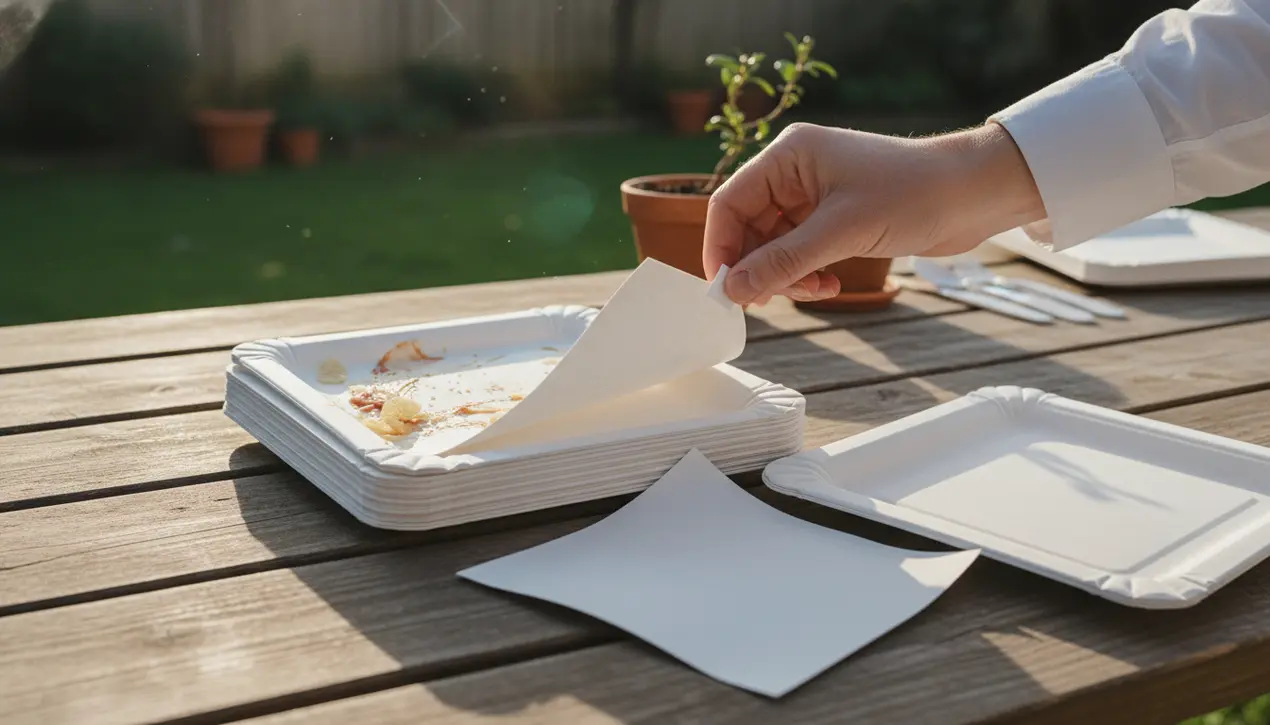
Scienceresearch policyInnovation and Patents
Peelable paper plates break down without additional waste.
RA
Rachel Adams
2 hours ago7 min read1 comments
In a world drowning under the weight of single-use plastics and the ceaseless churn of disposable culture, a seemingly simple innovation—a paper plate with peelable layers—arrives not as a mere product but as a quiet rebellion. The design, featuring square-shaped plates with user-lifted tabs that allow for clean separation, directly confronts the environmental catastrophe of conventional disposable dishware, which contributes millions of tons of waste to landfills annually, where they can persist for decades, leaching chemicals and contributing to microplastic pollution.This isn't just a new item on a shelf; it's a fundamental rethinking of the entire lifecycle of a product we use for mere minutes. The core mechanism, a multi-use plate that sheds its soiled surface layer to reveal a fresh one underneath, operates on a principle of radical reduction, echoing the urgent calls from global environmental organizations for a systemic shift away from our throwaway economy.Imagine the lifecycle of a standard paper plate, often coated in plastic PFAS to prevent grease from soaking through, a chemical treatment that renders it non-compostable and a persistent environmental toxin; in stark contrast, this peelable design, presumably relying on engineered paper layers without such harmful coatings, promises a breakdown process that returns to the earth without leaving a toxic legacy. The implications ripple outward from a backyard barbecue to global supply chains; if adopted at scale for events, in fast-casual dining, or even in institutional settings, the cumulative reduction in waste volume could be staggering, potentially diverting entire landfills' worth of material and significantly lowering the carbon footprint associated with both production and waste management.However, the success of such an innovation hinges on a critical, often overlooked component: human behavior. Will consumers, accustomed to the mindless convenience of tossing a whole plate, adapt to the slight extra step of peeling? The design’s success will be a litmus test for our collective willingness to engage in proactive waste management, a small daily ritual that connects individual action to planetary health.Furthermore, the material science behind creating a plate that is sturdy enough for use yet easily separable is no small feat, likely involving precise adhesives or structural paper engineering that maintains integrity under the weight of food but yields cleanly at the tab—a triumph of bio-design that deserves as much attention as the product itself. When viewed through the lens of historical precedents, this feels like a descendant of the milkman model of reusable packaging, updated for a modern, convenience-driven society; it’s a step towards a circular economy that doesn't ask consumers to abandon convenience entirely but to participate in a smarter, more responsible form of it. The true measure of its impact, however, will be seen in its scalability and accessibility—can it be produced affordably and from sustainably sourced, perhaps even recycled, materials to avoid simply shifting the environmental burden from the waste phase to the production phase? As climate reports grow increasingly dire and images of plastic-choked oceans become commonplace, solutions like peelable plates represent a tangible, if incremental, move away from the brink, a small but significant thread in the larger tapestry of ecological restoration we must urgently weave.
#peelable plates
#sustainable design
#waste reduction
#disposable dishware
#featured
Stay Informed. Act Smarter.
Get weekly highlights, major headlines, and expert insights — then put your knowledge to work in our live prediction markets.
Comments
Loading comments...
© 2025 Outpoll Service LTD. All rights reserved.